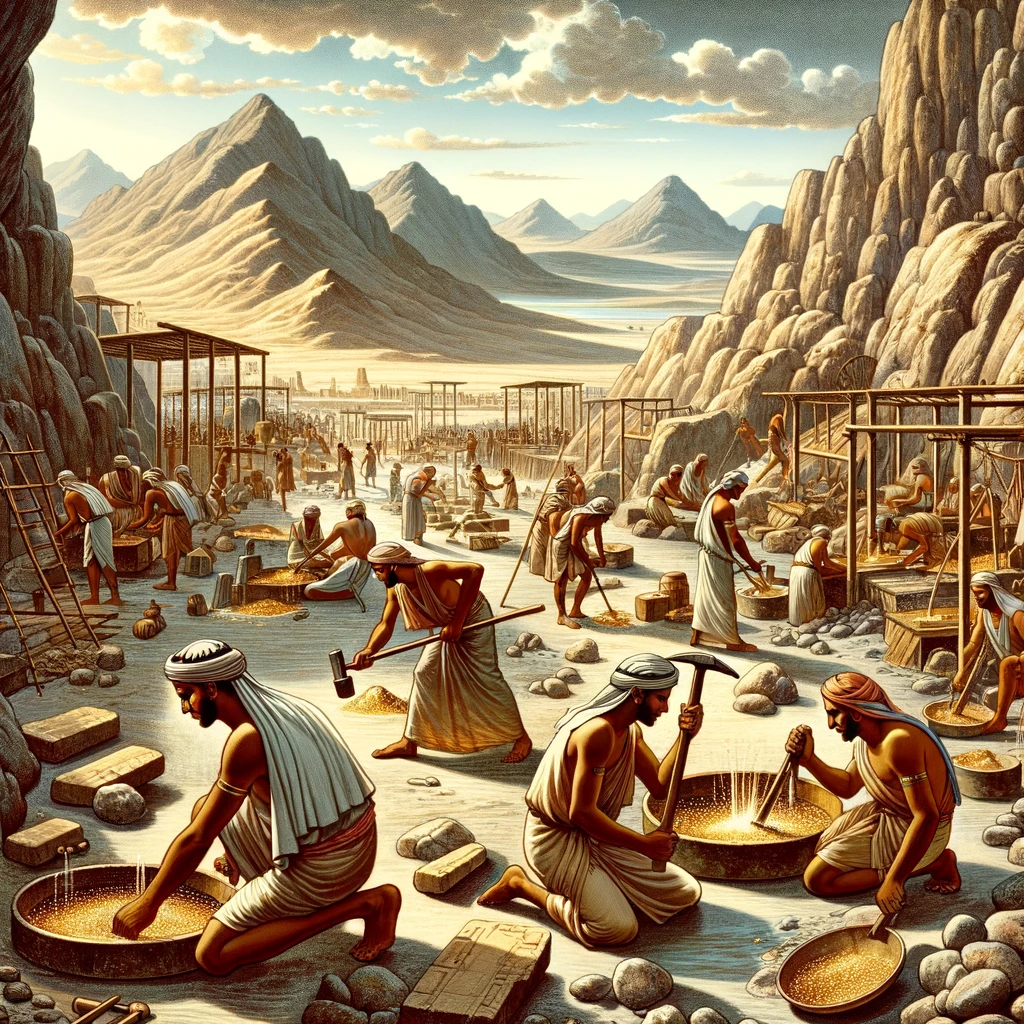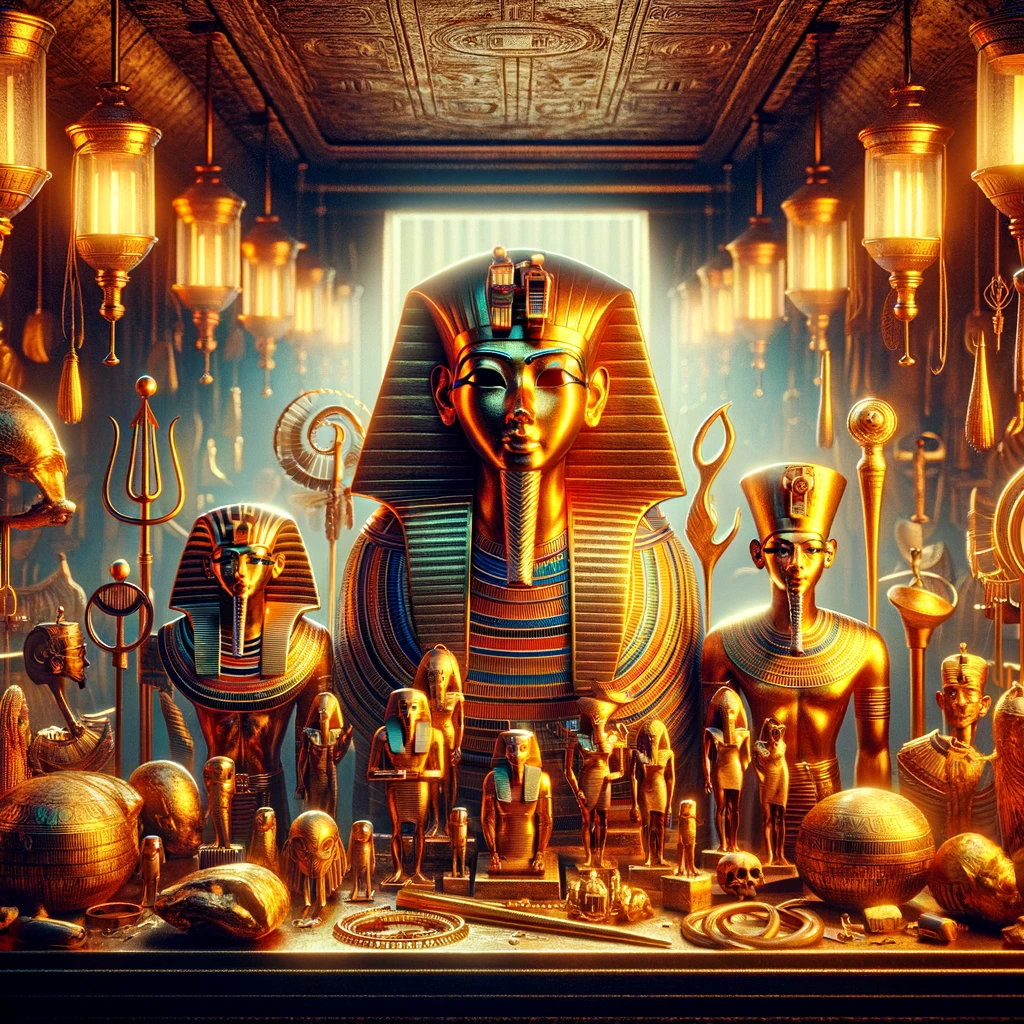Gold mining was a significant activity in ancient Egyptian civilization, deeply integrated into Egypt’s cultural and religious life. Known as the “golden country,” Egypt was famous for its substantial gold deposits, which were crucial to its economic and ceremonial affairs. The Egyptians began mining gold before 2000 BCE, primarily in the Eastern Desert and Nubia.
Historical Context
The earliest gold mining activities in ancient Egypt can be traced back to the Predynastic period, with gold playing a vital role in trade and the crafting of jewelry and ornaments. By the Old Kingdom, the scale of mining operations had expanded, leading to the development of extensive mining districts. Gold was synonymous with divine royalty and was a symbol of eternal life, making it an essential material for religious artifacts, funerary equipment, and decorations for temples and tombs.
Mining Techniques and Locations
The ancient Egyptians developed sophisticated mining techniques and explored several areas to extract gold. The most prolific gold mining region was the Eastern Desert of Egypt and Nubia (now northern Sudan). Key sites included Wadi Hammamat, where miners extracted gold from quartz veins, and the regions of Allaqi and Nubia, where placer gold (gold found in river sands and gravels) was abundant.
Miners used tools made from bone, wood, and stone to break rocks and process the gold-bearing deposits. Gold particles were washed and sifted from the sands and gravels in the riverbeds, a method that required considerable labor but was effective in extracting gold. These efforts were organized and controlled by the state, with records indicating that mining expeditions included thousands of workers, including miners, soldiers, scribes, and other personnel.
Cultural Significance
Gold held deep spiritual significance for the ancient Egyptians. It was believed to be the flesh of the gods, specifically the sun god Ra, which is why gold was prevalently used in making statues of gods and pharaohs. The famous burial mask of Tutankhamun, crafted from solid gold, exemplifies the importance of gold in royal burials, designed to prepare and protect the king in the afterlife.

An ancient Egyptian gold mining scene in the Eastern Desert. It shows workers using primitive tools to extract gold, supervised by overseers, set against a backdrop of rugged desert landscapes. This illustration highlights the economic and cultural importance of gold mining in ancient Egypt.
Economic Impact
The wealth generated from gold mining contributed significantly to the prosperity of ancient Egypt, enabling the construction of monumental structures such as the pyramids and the establishment of a complex administrative system. It also bolstered Egypt’s position in international trade, as gold was a critical commodity traded with neighboring regions.
Legacy
The legacy of gold mining in ancient Egypt is still visible in the vast amounts of gold artifacts found in tombs and temples across the country. These artifacts continue to be a testament to the sophistication and wealth of ancient Egyptian civilization. Modern archaeological techniques and excavations continue to uncover the scale and reach of Egyptian gold mining, offering insights into the ancient world’s economic and cultural dynamics.
Gold mining was more than just an economic activity; it was a central element of Egyptian cosmology and belief, intertwined with the divine and the eternal, reflecting the civilization’s enduring allure and splendor.










